
The Panamint Range is a short rugged fault-block mountain range in the northern Mojave Desert, within Death Valley National Park in Inyo County, eastern California. Dr. Darwin French is credited as applying the term Panamint in 1860 during his search for the fabled Gunsight Lode. The orographic identity has been liberally applied for decades to include other ranges.
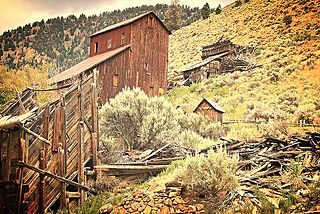
Bayhorse is a ghost town in Custer County, Idaho, United States, founded in 1877. After a new gold mine failed, silver was discovered in the area and a mine was started. Bayhorse was originally established by the silver mine.

Onota was a village in the Upper Peninsula of the U.S. state of Michigan. It was located on the Grand Island Bay of Lake Superior near the present-day community of Christmas about five miles (8 km) west of Munising in Alger County. The site of Onota is within the Bay Furnace Campground and Picnic Area of the Hiawatha National Forest. The remains of Bay Furnace, a blast furnace used for smelting iron, is the only extant remnant of the town. Bay Furnace was listed on the National Register of Historic Places and designated a Michigan State Historic Site in 1971.

The Katahdin Iron Works is a Maine state historic site located in the unorganized township of the same name. It is the site of an ironworks which operated from 1845 to 1890. In addition to the kilns of the ironworks, the community was served by a railroad and had a 100-room hotel. The site was listed on the National Register of Historic Places in 1969.

A charcoal burner is someone whose occupation is to manufacture charcoal. Traditionally this is achieved by carbonising wood in a charcoal pile or kiln.
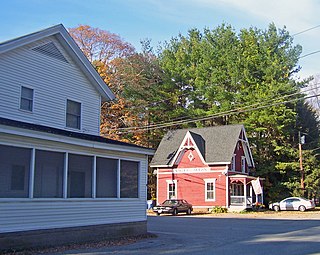
The Sharon Valley Historic District is located around the junction of Kings Hill, Sharon Valley and Sharon Station roads in Sharon, Connecticut, United States. It is a small community that grew up around an iron mining and refining operation during the late 19th century, the first industry in Sharon.
Charcoal Kilns may refer to:

Sunflower is a region of Maricopa County, Arizona, United States adjacent to the Mazatzal Wilderness, west of Tonto National Forest and northwest of Roosevelt Reservoir. Formerly a mercury-mining district, Sunflower is now a destination for hikers, campers and off-road vehicle tours. Sunflower is located near Arizona State Route 87, 22.8 miles (36.7 km) northeast of Fountain Hills. Route 87 near Sunflower is called the Beeline Highway.
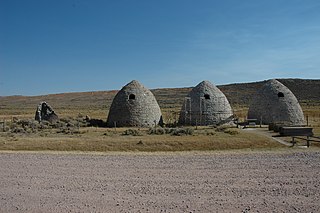
The Piedmont Charcoal Kilns in Piedmont, Wyoming, are a remnant of a once-extensive charcoal-making industry in southwestern Wyoming. The kilns were built by Moses Byrne around 1869 near the Piedmont Station along the Union Pacific Railroad. The three surviving beehive-shaped kilns were built of local sandstone about 30 feet (9.1 m) in circumference and about 30 feet (9.1 m) high, with 24-inch-thick (61 cm) walls. A granite marker reads:
Charcoal Kilns were built by Moses Byrne, 1869, to supply the pioneer smelters in the Utah Valley.

The Schoolcraft Furnace site is an abandoned iron furnace site located just east of Munising, Michigan, within the Pictured Rocks National Lakeshore near the Munising Falls Visitor Center. It was listed on the National Register of Historic Places in 1977. It is also known as the Munising Furnace.
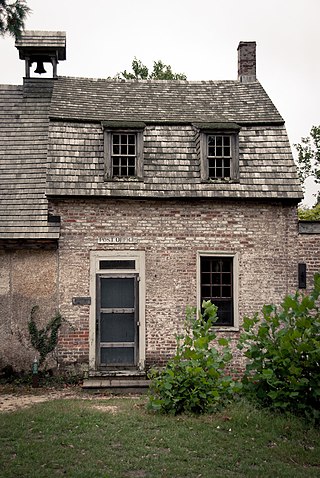
Batsto Village is a historic unincorporated community located on CR 542 within Washington Township in Burlington County, New Jersey, United States. It is located in Wharton State Forest in the south central Pine Barrens, and a part of the Pinelands National Reserve. It is listed on the New Jersey and National Register of Historic Places, and is administered by the New Jersey Department of Environmental Protection's Division of Parks & Forestry. The name is derived from the Swedish bastu, bathing place ; the first bathers were probably the Lenni Lenape Native Americans.
The Beck No. 2 Mine near Eureka, Utah dates from 1890. It was listed on the National Register of Historic Places in 1979. The listing included "surface plant buildings" of the lead mine and one other contributing structure, a "remaining wooden headframe", described as a "fifty foot wooden headframe A-frame Montana type". These evoke the past mining operations at the site.
The Charcoal Kilns near Eureka, Utah were listed on the National Register of Historic Places in 1979. The listing included two charcoal kilns that each are about six feet in diameter and four feet deep, built out of stone. They are believed to have been built or used to support the Wyoming Smelter in 1871.
The Lime Kilns located at the western end of Homansville Canyon near Eureka, Utah, were part of a lime quarry in the 1920s. The kilns were listed on the National Register of Historic Places in 1979. The listing included one contributing site and two contributing structures: two lime kilns that are approximately 8 feet (2.4 m) in diameter and 30 to 40 feet deep.

The Birch Creek Charcoal Kilns are a group of beehive-shaped clay charcoal kilns near Leadore, Idaho, built in 1886. They were listed on the National Register of Historic Places in 1972.
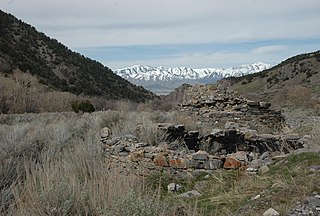
The Soldier Creek Kilns near Stockton, Utah date from about 1873, the time of their construction, and were in use up until about 1899. Also known as the Waterman Coking Ovens, they were listed on the National Register of Historic Places (NRHP) in 1980. The listing included 14 contributing structures over 30 acres (12 ha).
Tybo is an unincorporated community in Nye County, Nevada, United States. Tybo is 8 miles (13 km) northwest of U.S. Route 6 and 10 miles (16 km) northeast of Warm Springs. The community was established in the 1870s as a silver mining town. Its name came from the Shoshone word tybbabo or tai-vu, meaning "white man's district". The community prospered in the 1870s; its population neared 1000, and it had a school, post office, and newspaper by the end of the decade. A variant is Tyboe found on Wheeler's map of 1871.
The Tybo Charcoal Kilns are a pair of charcoal kilns located 4 miles (6.4 km) north of Tybo, Nevada. Both kilns are 30 feet (9.1 m) tall and 25 feet (7.6 m) in diameter and were built from rocks and mud. The kilns each have three openings: a top opening, a door at ground level, and a rear window with a ramp for wood wagons. The kilns were among 15 built in 1874 for the Tybo Consolidated Company. The company, which mined the region's silver, used charcoal to fuel its smelting furnace. To acquire its fuel, it imported wood from nearby hills, which it then converted to charcoal in the kilns.

The Frisco Charcoal Kilns are remnants of silver mining in the Utah ghost town of Frisco. They remain as a visual documentation of the state's mining history
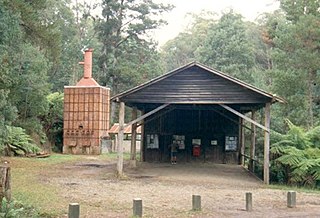
Kurth Kiln was established by the Forests Commission Victoria in 1941 on a site about 7 km north of Gembrook on the Tomahawk Creek.
















